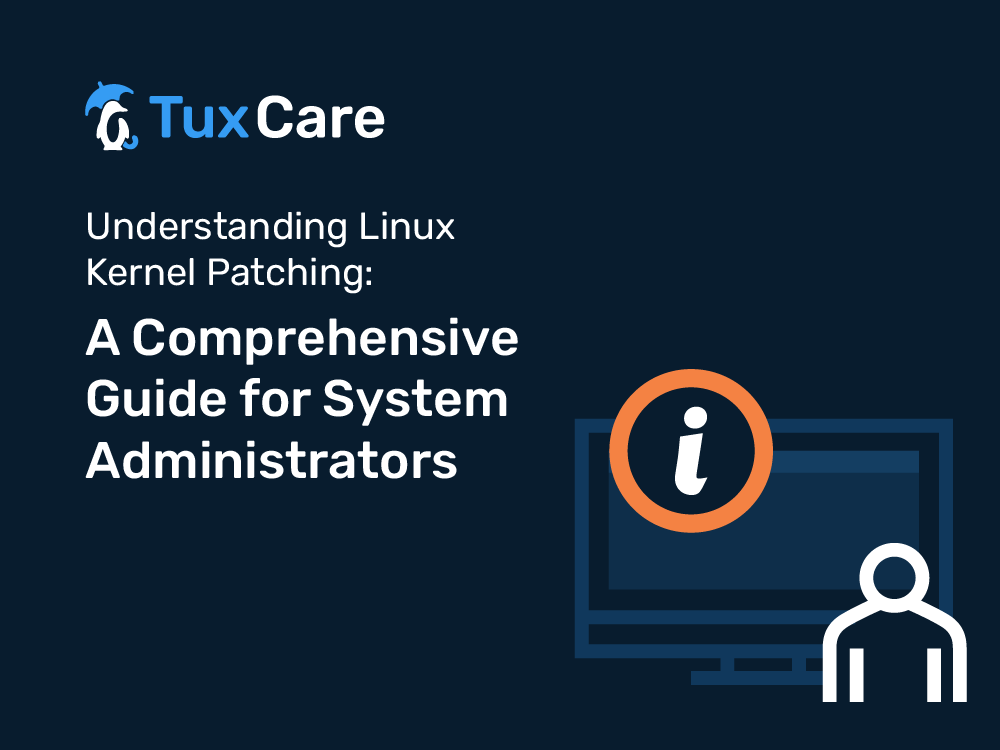Understanding Linux Kernel Patching: A Comprehensive Guide for System Administrators
Even seasoned professionals need a refresher every now and then. Maybe some concepts are not clearly defined, or were just glossed over without much further concern, and applied more out of habit than ingrained knowledge. How much do you know about patching? It’s arguably one of the basic tasks performed as part of the operations (and, honestly, all other fields in IT), and is the first step towards improving security in the systems under your purview. Notably, Linux kernel patching plays a crucial role in system administration tasks. This comprehensive guide aims to shed light on this topic to equip you with the necessary knowledge for effective management.
Patching: An Overview
Patching is both a process and a practice in the IT realm that fixes issues or enhances features of a system by updating existing components with new ones. Derived from the physical process of covering holes in punch cards, the term patching has significantly evolved and now covers several modern approaches. It applies to various system levels, from the subsystem, dependency, or core functionality level, to specific applications, operating systems, drivers, and other components. The end goal remains the same: to achieve a more secure and updated version of the system in question.
The Linux Kernel and Its Importance
The Linux kernel serves as the heart of any Linux operating system, connecting the system software to the hardware of a computer. It’s responsible for core functionalities such as process management, memory management, device management, and system calls. Therefore, maintaining an up-to-date and secure kernel is crucial, making Linux kernel patching an essential part of system administration.
Approaches to Patching
Several approaches to patching, each with their unique advantages and challenges, are employed to keep systems up to date and secure.
Traditional Patching (or, the way it has always been done)
The most commonly recognized form of patching involves downloading updated versions of software and replacing the old files on disk with the new versions. However, this method often requires restarting applications or rebooting entire systems, causing potential disruptions and necessitating the use of a “maintenance window.”
Virtual Patching
Virtual patching operates on a different level, implementing threat detection at the firewall level and blocking known attack patterns. It offers immediate protection to systems behind it without disruption or changes within the system itself. However, its limitations lie in the lack of actual code replacement or correction.
Firmware Patching
Firmware patching is a specific case of traditional patching. It involves updating code stored in EPROM chips, typically found in early smart devices (“smart” is a generous word in this context) and first-generation IoT devices. This type of patching adds a layer of complexity due to the challenging nature of updating the storage media.
Live Patching
Live patching presents an innovative approach that allows modifications to running code without causing system disruptions. It replaces known buggy sections or functions in memory with corrected versions. This method can be deployed immediately, allowing faster response to emerging threats. The Linux kernel has supported live patching for over a decade, and several solutions like KernelCare Enterprise can live patch the Linux kernel, critical system libraries, databases, and hypervisors.
The History and Evolution of Patching
Historically, patches were distributed on paper tape or punched cards, which required manual application. While software practices and hardware have evolved past those earlier room-sized computer systems, we have yet to achieve the bug-less software nirvana. As such, regardless of how they are actually delivered, fixes, updates or modifications to existing software continue to be distributed as patches, to this day.
With the advent of the Internet, automatic software updates via downloads from the developer’s website or through automated software updates became available. Today, many programs can update themselves with minimal user intervention, a significant development that helps maintain system consistency, particularly for system administrators managing numerous computers.
Linux Kernel patching and Its Specific Concerns
In the early days, patching the Linux kernel followed the same routine as patching any other software package within a Linux system. This involved selecting an updated version of the kernel package from your distribution’s preferred package manager, installing it, and subsequently rebooting. Post reboot, your Linux system was up and running, equipped with a brand new kernel version.
This process, while effective, came with its fair share of inconveniences. The most prominent of these was the disruption brought about by the necessary reboot. Given that the reboot process interfered with running workloads, system administrators often postponed kernel updates to prevent adverse business impacts. This resulted in a precarious balancing act between staying current with the latest kernel version – often loaded with the most recent bug and security fixes – and running the risk of exposing your system to potential security vulnerabilities for extended periods.
To counteract this issue, the Linux community introduced live patching techniques into the kernel. These advanced techniques allowed patches to be deployed that addressed specific issues in certain sections of the kernel code, all while the system remained active and uninterrupted. This was a radical departure from a firmly established practice and marked a turning point in Linux kernel patching.
Patch Management
Patch management, a critical part of lifecycle management, involves a strategic plan detailing which patches should be applied to which systems at specified times. While patches are primarily designed to fix problems, they can sometimes introduce new issues if poorly designed, a scenario referred to as software regressions. Therefore, an understanding of the patch’s inner workings is critical, especially when the source code is unavailable.
Understanding and mastering Linux kernel patching is vital for system administrators, as it ensures system security, optimal performance, and long-term stability. The effective application of various patching methods, coupled with strategic patch management, can streamline the process, making it more economical and less disruptive.



 Documentation
Documentation Login
Login



